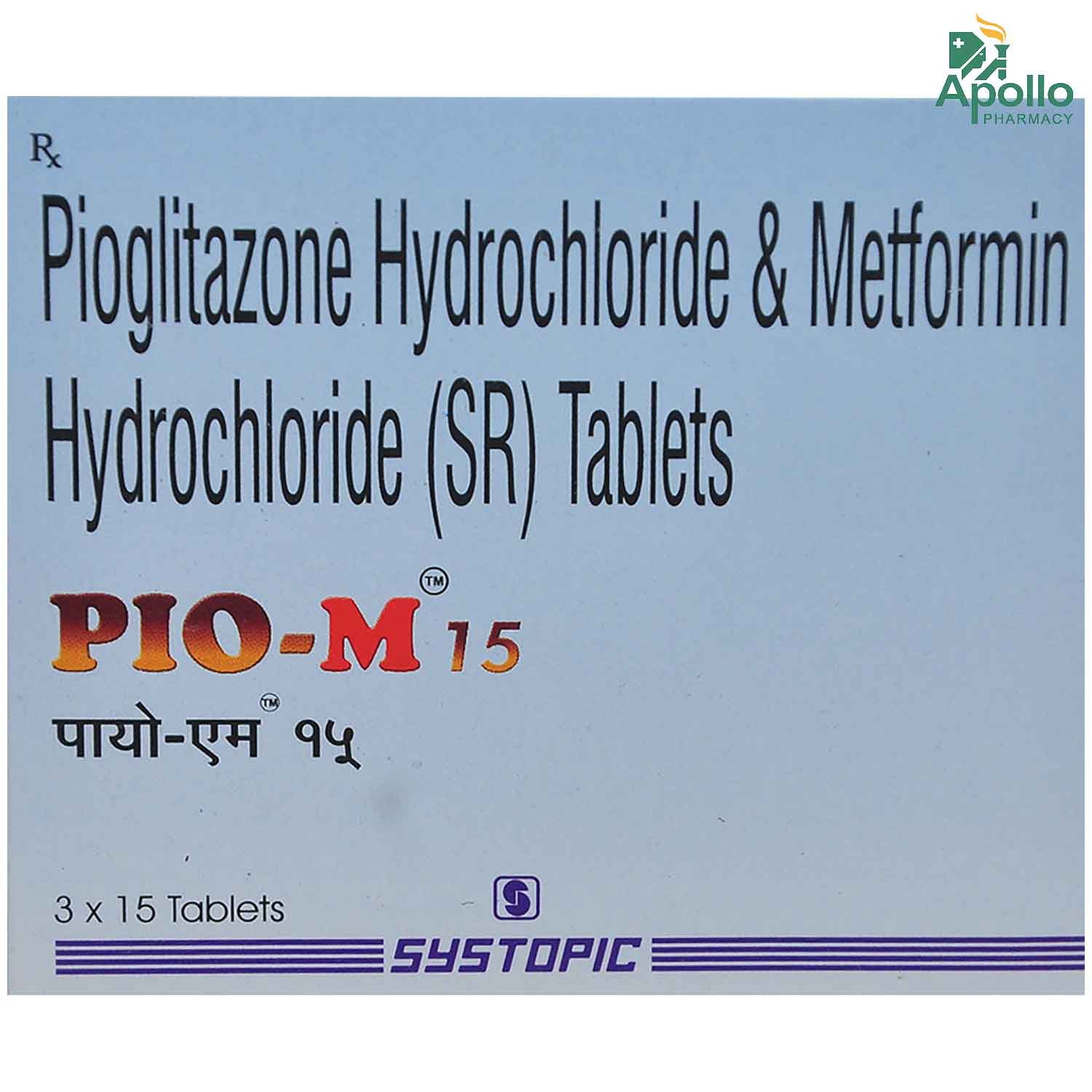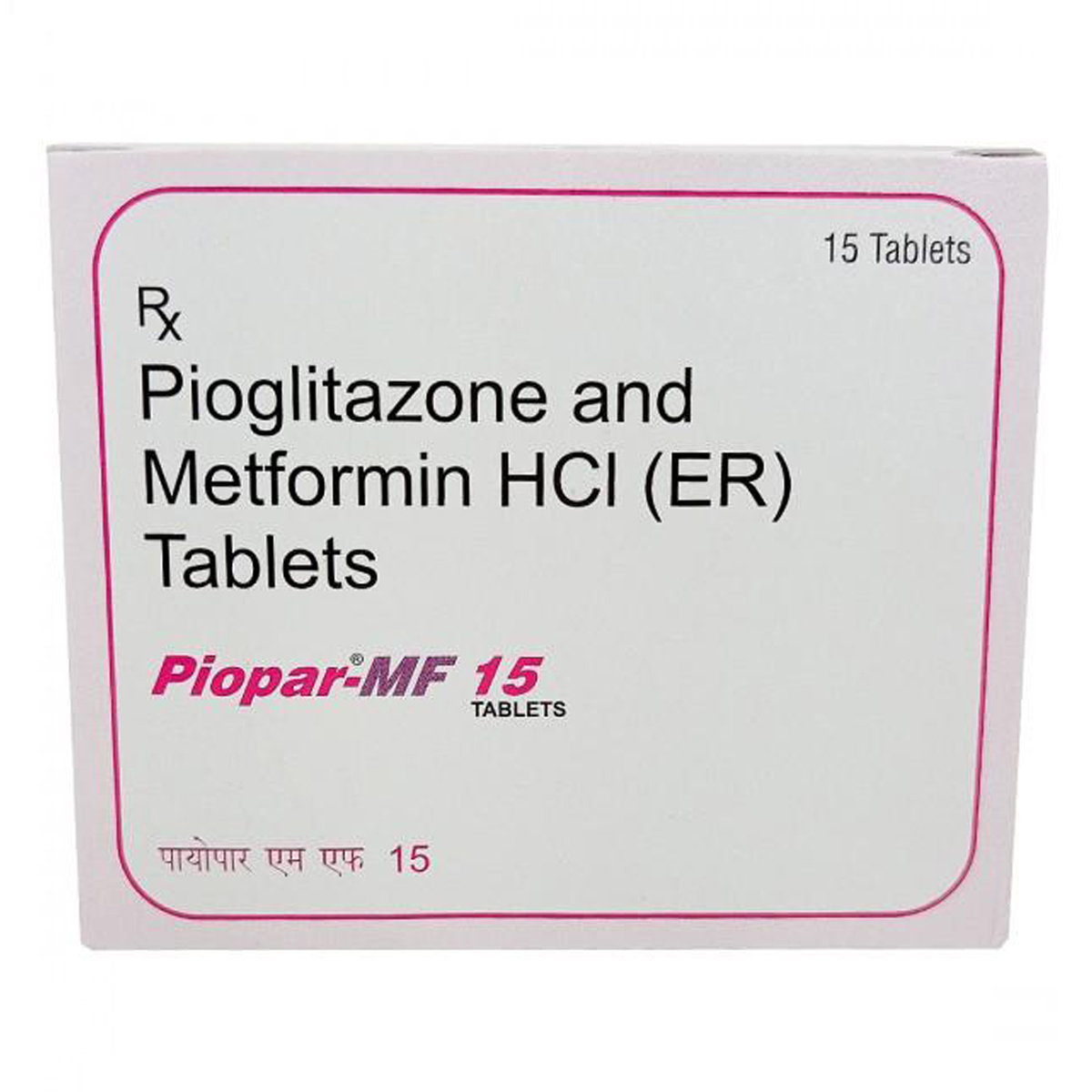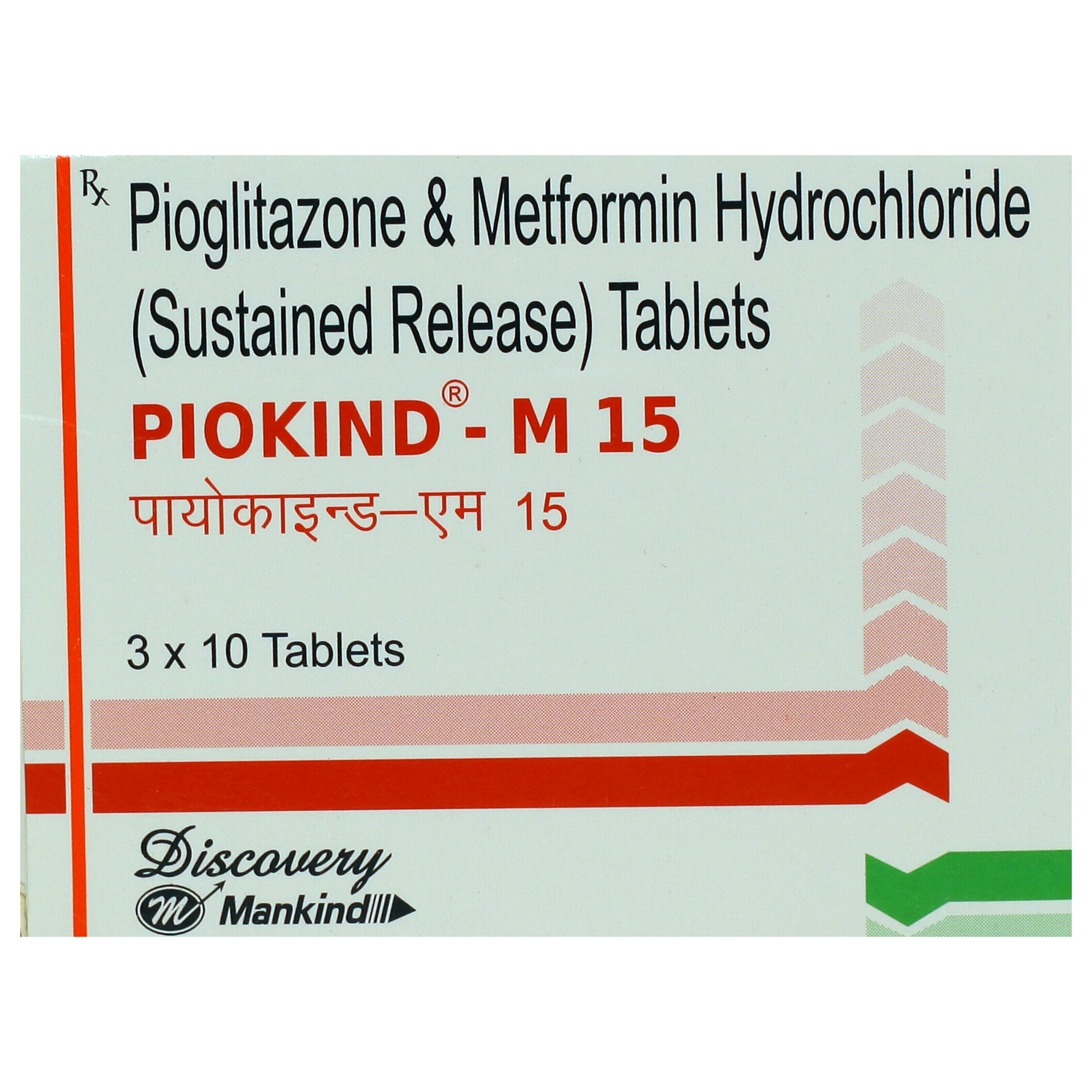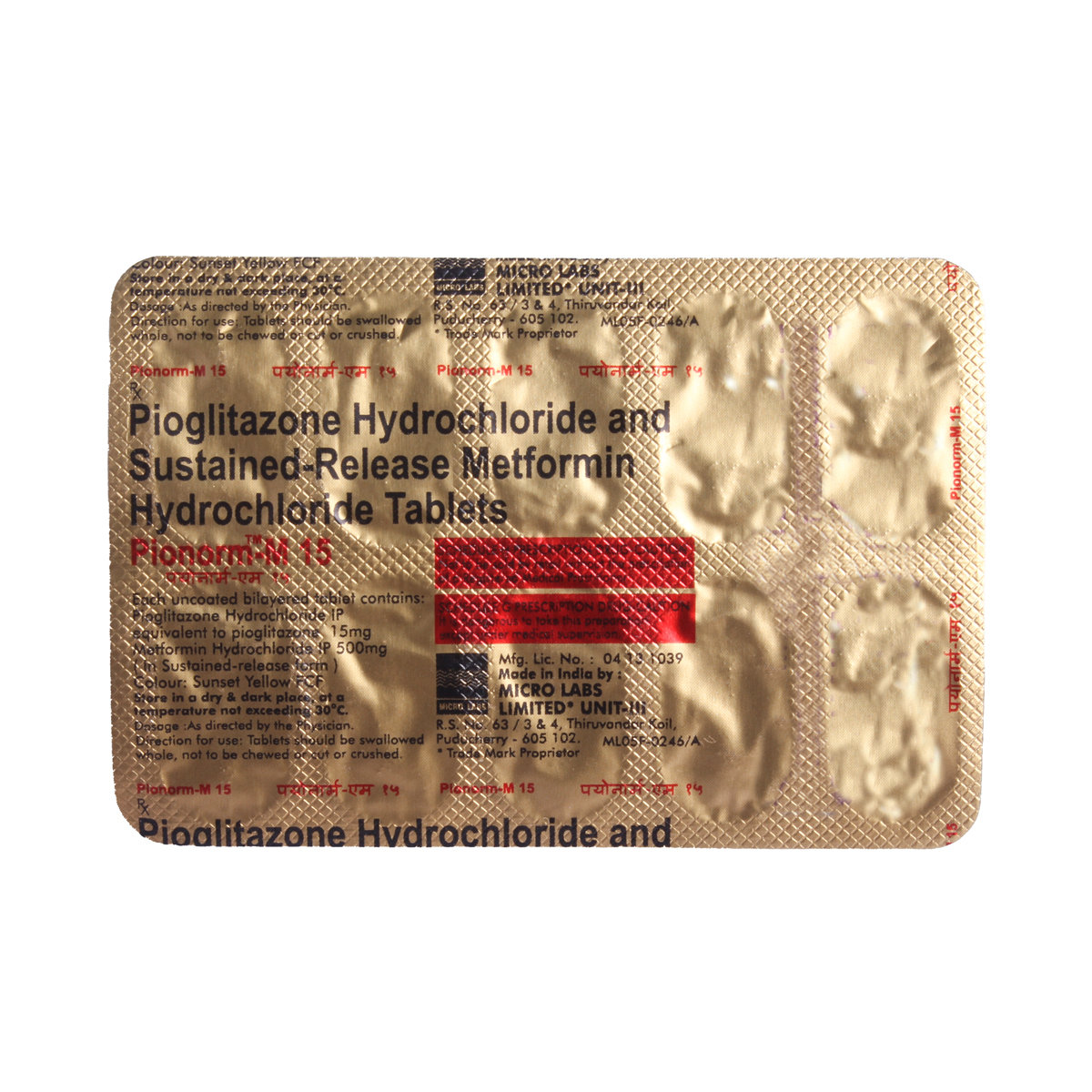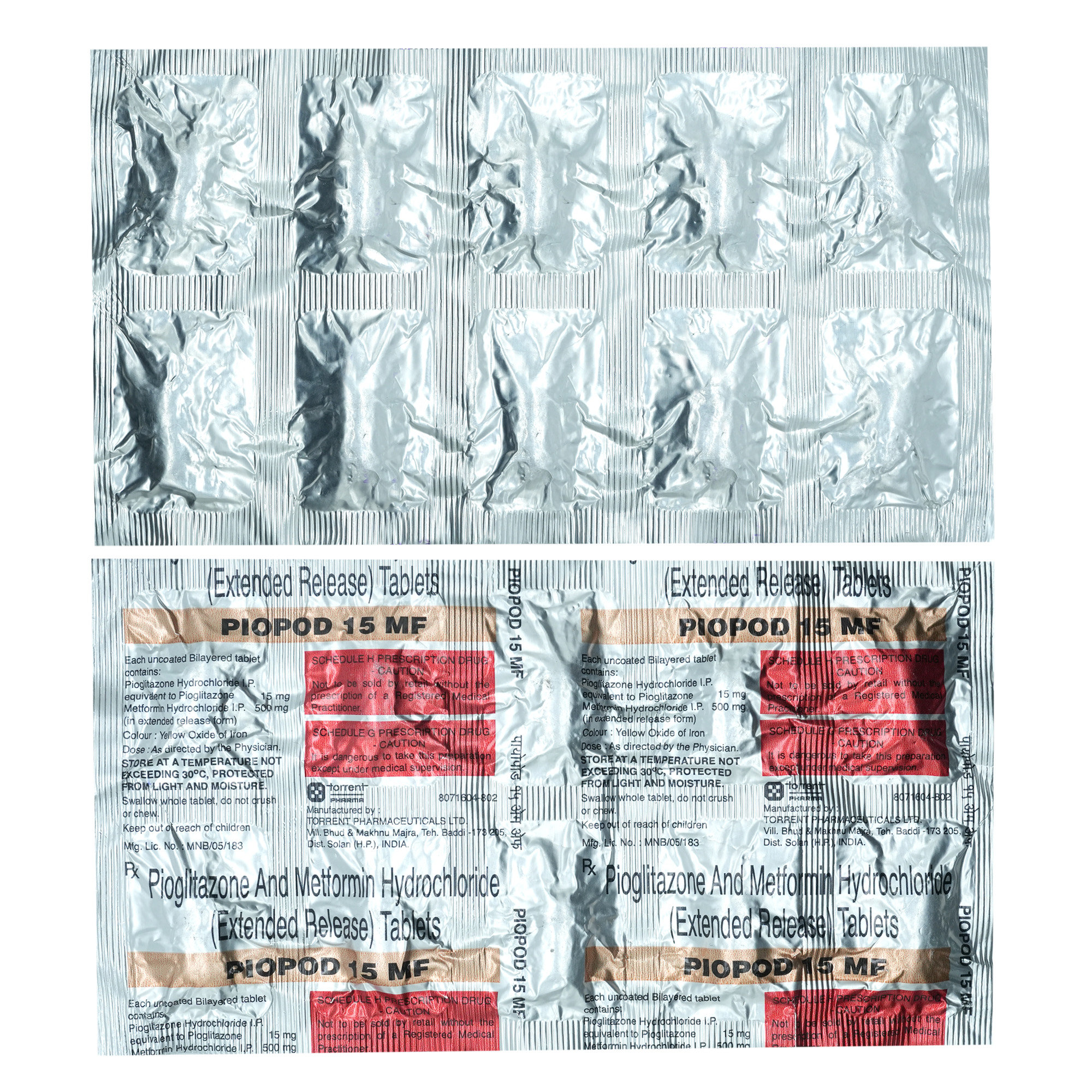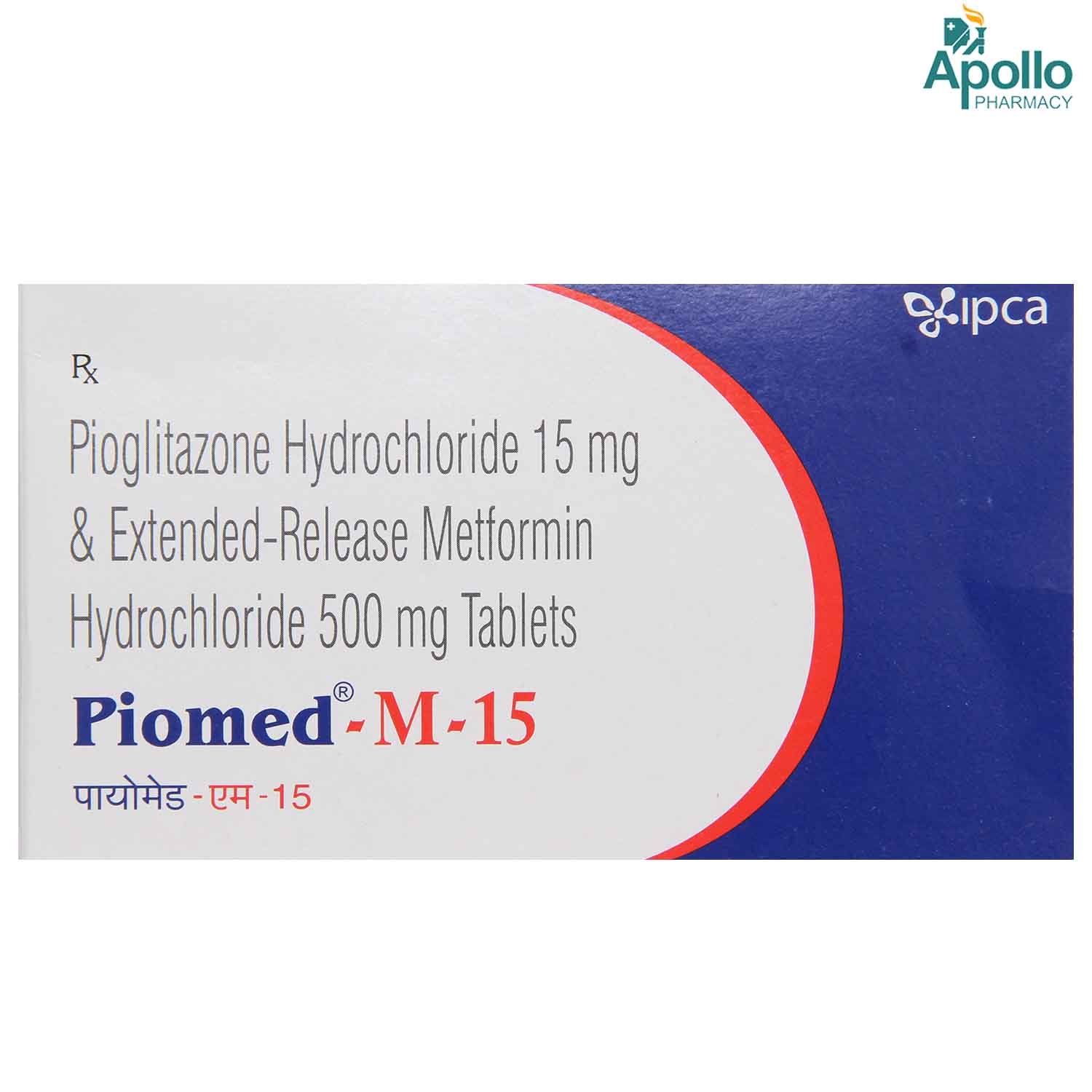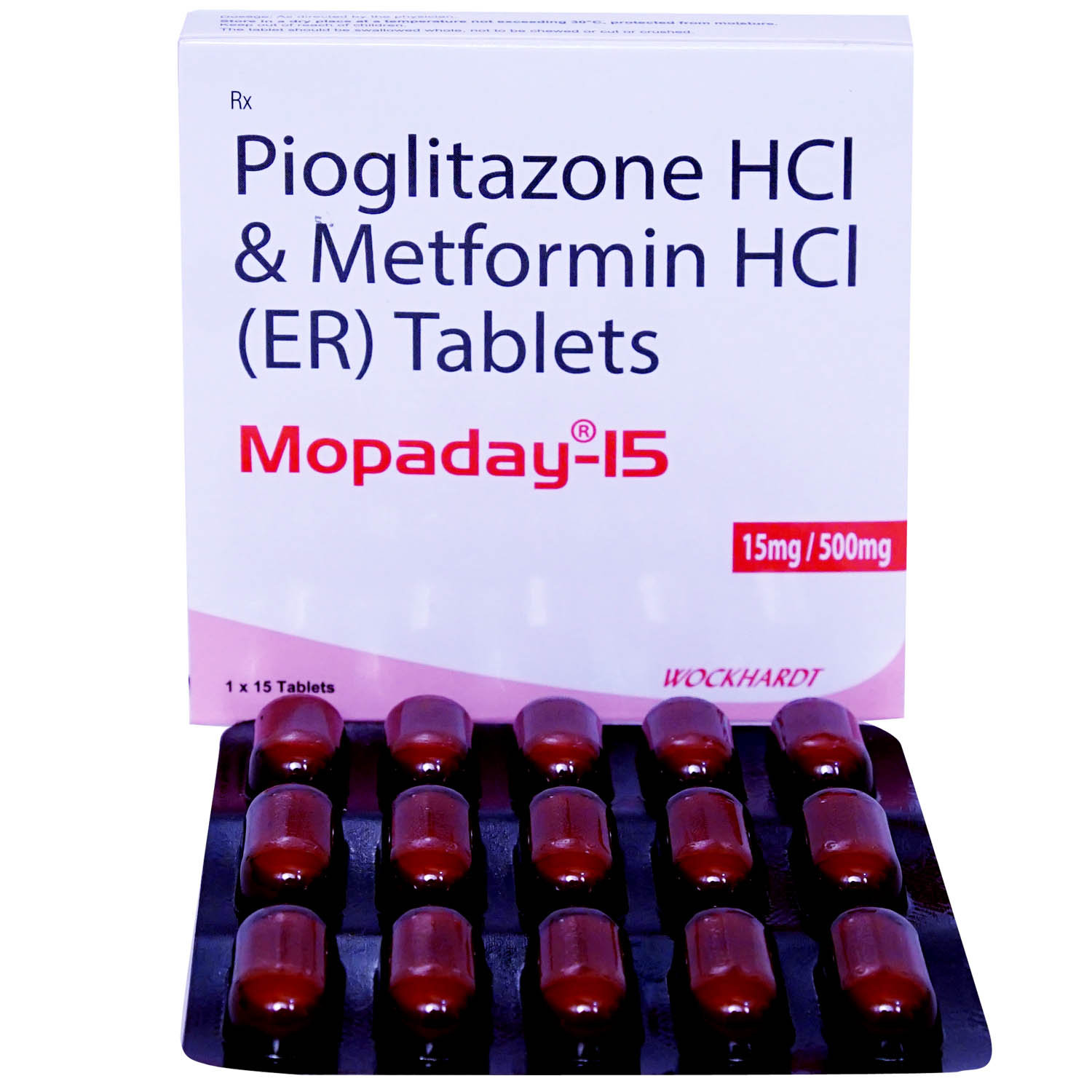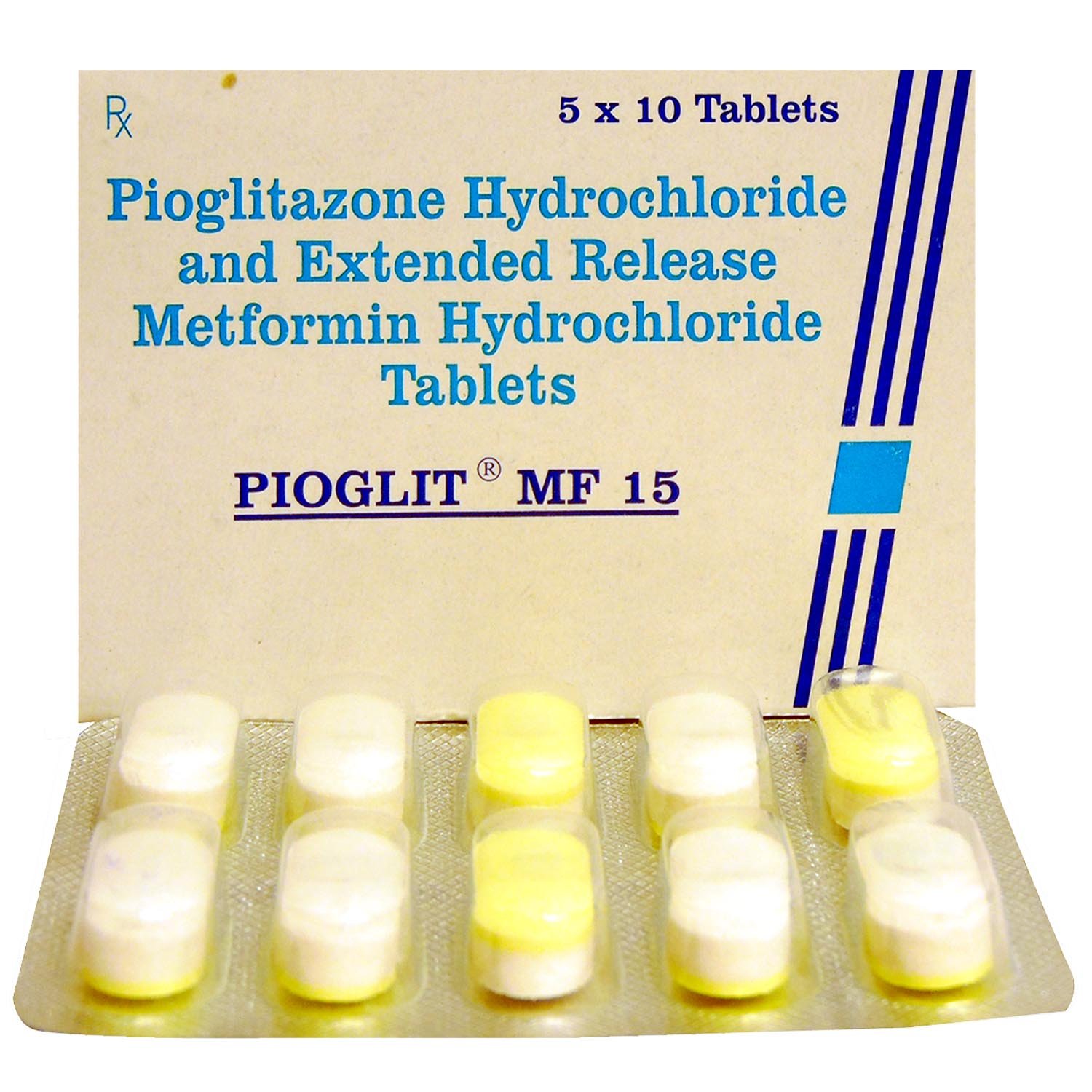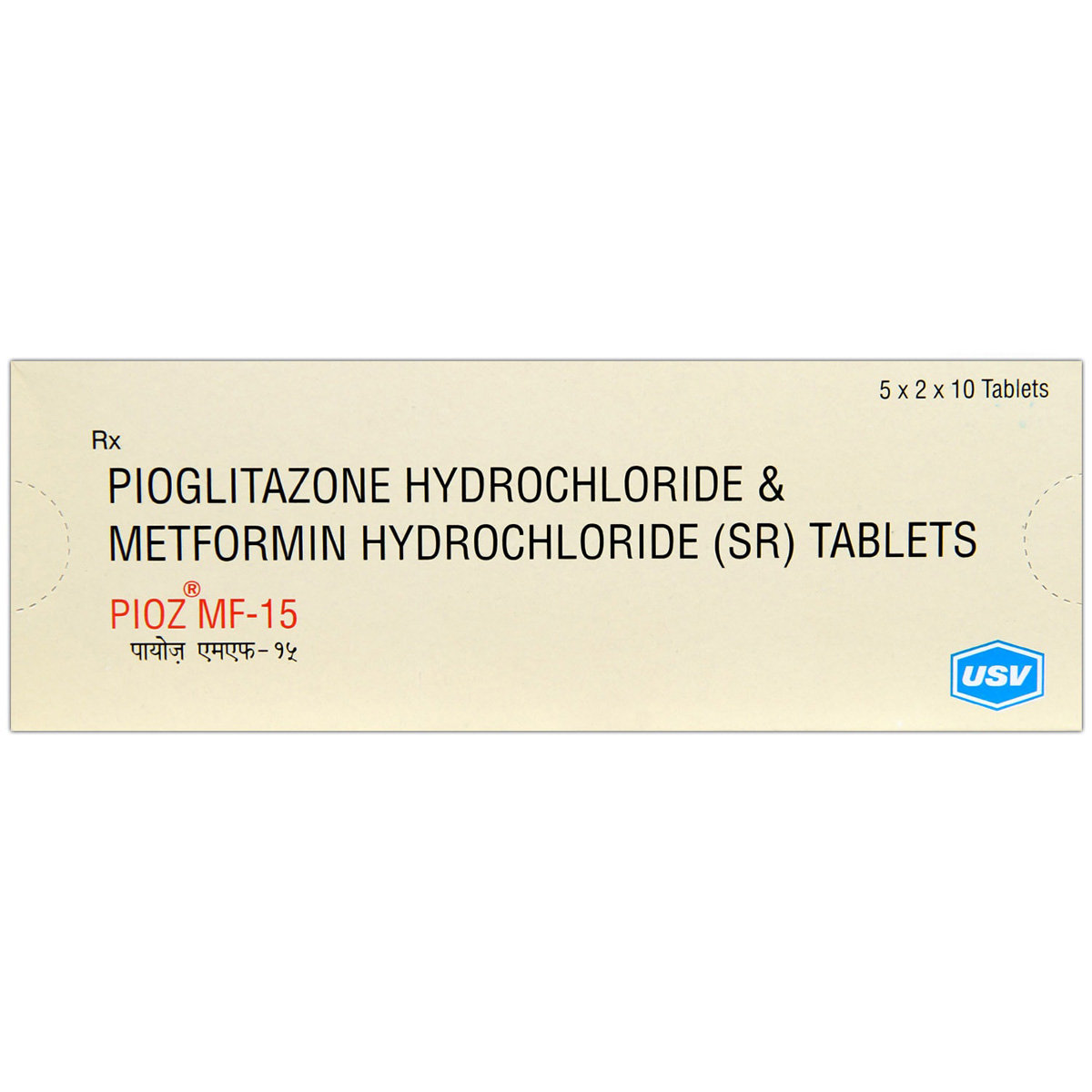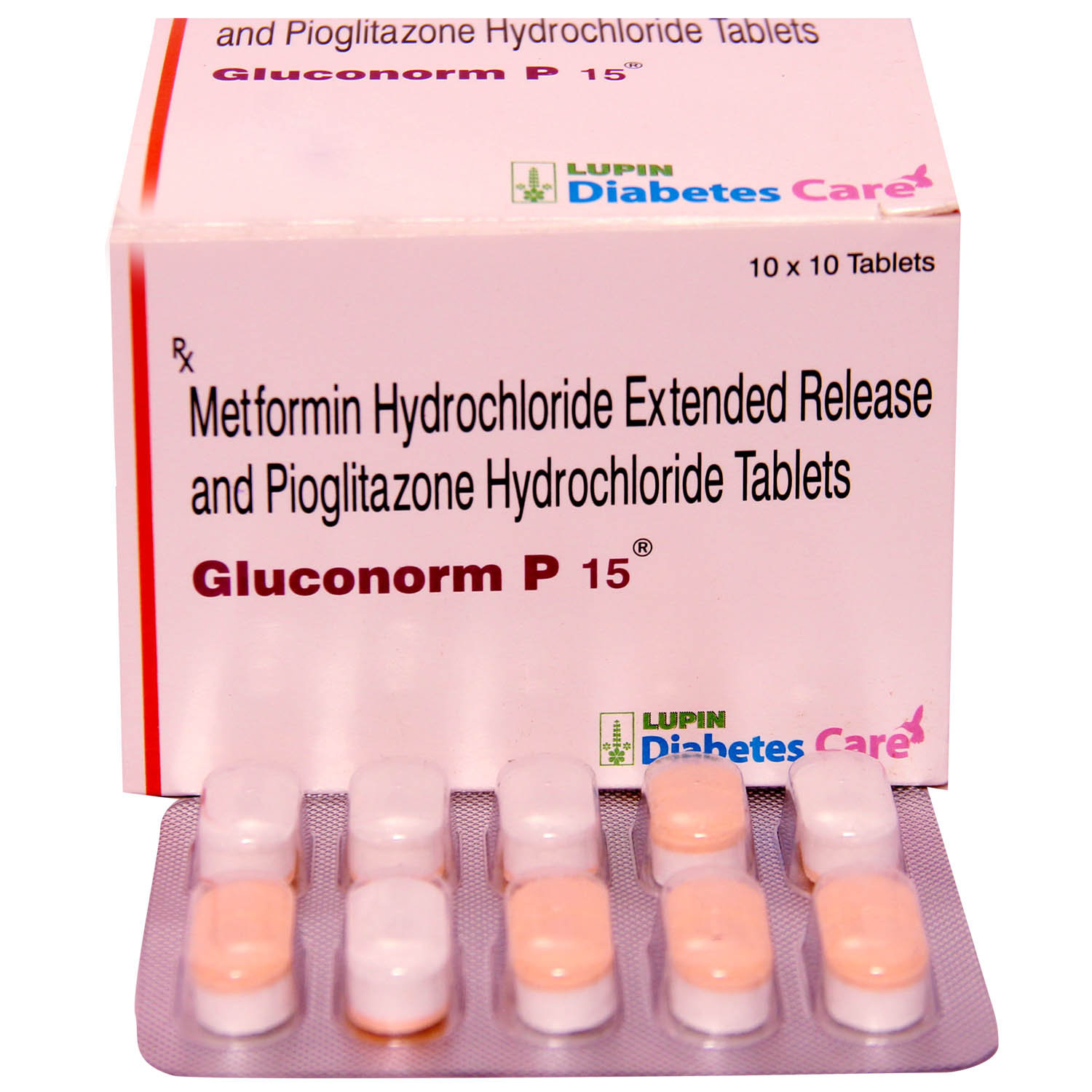Glitaris M 15 Tablet 10's
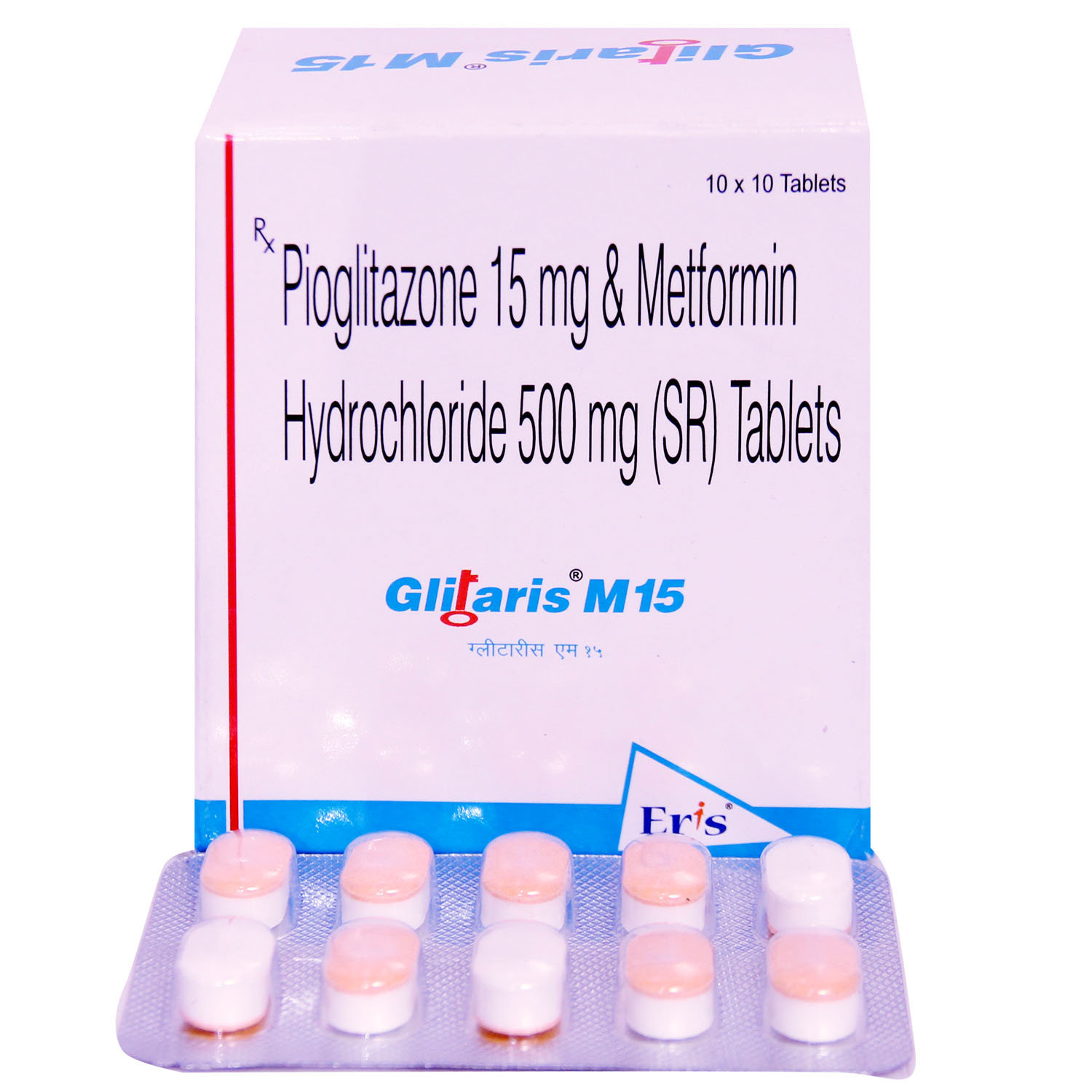
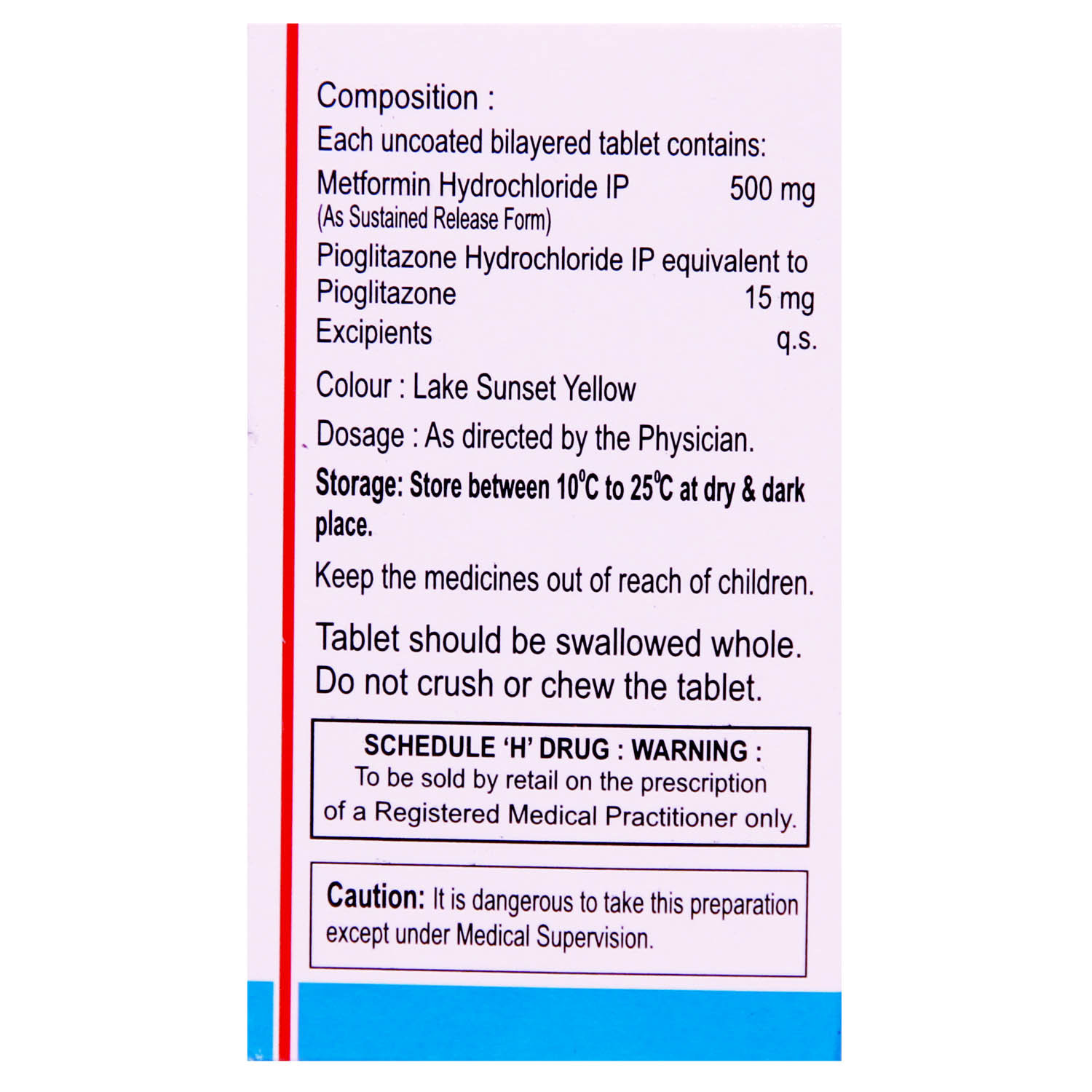
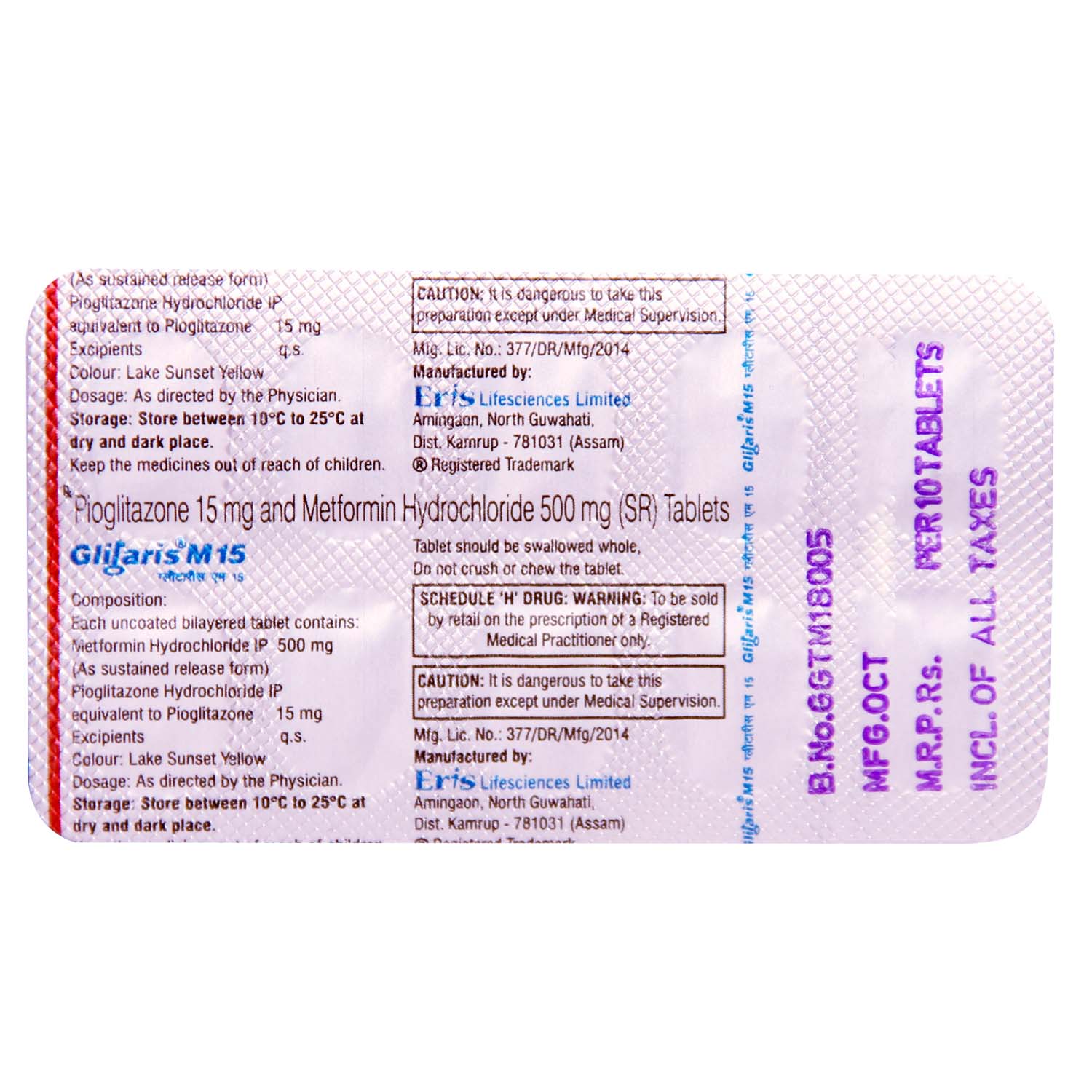



MRP ₹100
(Inclusive of all Taxes)
₹15.0 Cashback (15%)
Provide Delivery Location
Online payment accepted
 Prescription drug
Prescription drugWhats That
Composition :
Manufacturer/Marketer :
Consume Type :
Expires on or after :
Return Policy :
About Glitaris M 15 Tablet
Glitaris M 15 Tablet is a combination drug consisting of Pioglitazone (Thiazolidinediones), and Metformin (Biguanides) which are called anti-diabetic drugs & used to lower blood sugar levels in diabetic patients. Type 2 diabetes mellitus used to be known as 'non-insulin-dependent diabetes mellitus (NIDDM)' or 'maturity-onset diabetes'. Type 2 diabetes develops if the body does not produce enough insulin, or where the insulin that your body makes does not work as well as it should. It can also develop if the body produces too much glucagon. Insulin is a substance that helps to lower the level of sugar in your blood, especially after meals.
Glitaris M 15 Tablet is a blood sugar-lowering drug which contains a combination of Pioglitazone belonging to the class of thiazolidinediones & Metformin belonging to the class of biguanides. Pioglitazone decreases blood sugar and reverses the effects of Type II diabetes by activating switches (PPAR) inside cells to take up free glucose from blood and decrease its levels in blood. Metformin on the other hand decreases blood sugar by decreasing its formation and increasing its consumption by cells thereby decreasing high blood sugar levels. Glitaris M 15 Tablet is used in adults to treat type 2 (non-insulin dependent) diabetes mellitus when treatment with metformin alone is not sufficient.
Glitaris M 15 Tablet should be taken with food to avoid an upset stomach. Glitaris M 15 Tablet should be taken at the same time of the day each time for best results. For better advice, your doctor will decide, what dose should be taken and it can change timely depending upon your condition. Some people may stomach ache, feeling sick (Nausea), vomiting, diarrhoea, loss of appetite, localized swelling (oedema), weight gain, headache, respiratory infection, numbness, taste disturbance etc . Most of these side effects of Glitaris M 15 Tablet do not require medical attention and gradually resolve over time. However, if the side effects persist or worsen, please consult your doctor.
Glitaris M 15 Tablet should not be stopped even if you feel better, without consulting your doctor as sugar level keeps changing. If you stop taking Glitaris M 15 Tablet abruptly, it may increase your sugar levels which could further increase the risk of eyesight loss (retinopathy), kidney (nephropathy) and nerve damage (neuropathy). Glitaris M 15 Tablet should not be taken if you have type 1 diabetes mellitus, severe kidney or liver disease. Please inform your doctor if you have any heart disease, is or planning to get pregnant or breastfeeding.
Uses of Glitaris M 15 Tablet
Directions for Use
Key Benefits
Glitaris M 15 Tablet lowers blood sugar in type II diabetic patients (Non insulin dependent ) & prevents diseases of the heart, kidneys, eyes & blood vessels in feet, which happens due to persistently high levels of blood sugar in diabetic patients. Glitaris M 15 Tablet plays a vital role in controlling blood sugar levels and prevents serious complications of diabetes like eyesight loss (retinopathy), kidney (nephropathy), nerve damage (neuropathy), diabetic foot ulcer and delayed wound healing. Glitaris M 15 Tablet lowers blood sugar due to activation of cell switches (PPAR) to take up free glucose from blood & use it for energy production (Pioglitazones) & decrease production of glucose inside liver (Metformin) .
Storage
- Inform Your Doctor: Notify your doctor immediately about your diarrhoea symptoms. This allows them to adjust your medication or provide guidance on managing side effects.
- Stay Hydrated: Drink plenty of fluids to replace lost water and electrolytes. Choose water, clear broth, and electrolyte-rich drinks. Avoid carbonated or caffeinated beverages to effectively rehydrate your body.
- Follow a Bland Diet: Eat easy-to-digest foods to help firm up your stool and settle your stomach. Try incorporating bananas, rice, applesauce, toast, plain crackers, and boiled vegetables into your diet.
- Avoid Trigger Foods: Steer clear of foods that can worsen diarrhoea, such as spicy, fatty, or greasy foods, high-fibre foods, and dairy products (especially if you're lactose intolerant).
- Practice Good Hygiene: Maintain good hygiene to prevent the spread of infection. To stay healthy, wash your hands frequently, clean and disinfect surfaces regularly, and avoid exchanging personal belongings with others.
- Take Anti-Diarrheal Medications: If your doctor advises, anti-diarrheal medications such as loperamide might help manage diarrhoea symptoms. Always follow your doctor's directions.
- Keep track of your diarrhoea symptoms. If they don't get better or worse or are accompanied by severe stomach pain, blood, or dehydration signs (like extreme thirst or dark urine), seek medical help.
- Inform your doctor about the nausea and discuss possible alternatives to the medication or adjustments to the dosage.
- Divide your daily food intake into smaller, more frequent meals to reduce nausea.
- Opt for bland, easily digestible foods like crackers, toast, plain rice, bananas, and applesauce.
- Avoid certain foods that can trigger nausea, such as fatty, greasy, spicy, and smelly foods.
- Drink plenty of fluids, such as water, clear broth, or electrolyte-rich beverages like coconut water or sports drinks.
- Use ginger (tea, ale, or candies) to help relieve nausea.
- Get adequate rest and also avoid strenuous activities that can worsen nausea.
- Talk to your doctor about taking anti-nausea medication if your nausea is severe.
- Record when your nausea occurs, what triggers it, and what provides relief to help you identify patterns and manage your symptoms more effectively.
- Preventing Vomiting (Before it Happens)
- Take medication exactly as prescribed by your doctor. This can help minimize side effects, including vomiting.
- Having a small meal before taking your medication can help reduce nausea and vomiting.
- Talk to your doctor about taking anti-nausea medication along with your prescribed medication.
- Managing Vomiting (If it Happens)
- Try taking ginger in the form of tea, ale, or candy to help alleviate nausea and vomiting.
- What to Do if Vomiting Persists
- Consult your doctor if vomiting continues or worsens, consult the doctor for guidance on adjusting your medication or additional treatment.
- Tell your doctor about your GAS symptoms. They may change your medication regimen or prescribe additional drugs to help you manage them.
- To manage GAS symptoms, eat a balanced diet of fibre, vegetables, and fruits.
- Drink enough water throughout the day to avoid constipation and treat GAS symptoms.
- Regular exercise like yoga and walking may help stimulate digestion and alleviate GAS symptoms.
- Take probiotics only if your doctor advises, as they may help alleviate GAS symptoms by promoting gut health.
- Take medication for GAS symptoms only if your doctor advises, as certain medications can interact with your existing prescriptions or worsen symptoms.
- If symptoms persist, worsen, or are accompanied by severe abdominal pain, vomiting, or bleeding, seek immediate medical attention.
- If you experience low blood sugar levels, inform your doctor. They will assess the severity and make recommendations for the next actions.
- Your doctor will assess your symptoms, blood sugar levels, and overall health before recommending the best course of action, which may include treatment, lifestyle modifications, or prescription adjustments.
- Follow your doctor's instructions carefully to manage the episode and adjust your treatment plan.
- Make medication adjustments as recommended by your doctor to prevent future episodes.
- Implement diet and lifestyle modifications as your doctor advises to manage low blood sugar levels.
- Monitor your blood sugar levels closely for patterns and changes.
- Track your progress by recording your blood sugar levels, food intake, and physical activity.
- Seek further guidance from your doctor if symptoms persist or worsen so that your treatment plan can be revised.
- Take medications with food (if recommended): It can help prevent stomach distress and indigestion.
- Eat smaller, more frequent meals: Divide daily food intake into smaller, more frequent meals to ease digestion.
- Avoid trigger foods: Identify and avoid foods that trigger indigestion, such as spicy, fatty, or acidic foods.
- Stay upright after eating: Sit or stand upright for at least 1-2 hours after eating to prevent stomach acid from flowing into the oesophagus.
- Avoid carbonated drinks: Avoid drinking carbonated beverages, such as soda or beer, which can worsen indigestion.
- Manage stress: To alleviate indigestion, engage in stress-reducing activities like deep breathing exercises or meditation.
- Consult a doctor if needed: If indigestion worsens or persists, consult a healthcare professional to adjust the medication regimen or explore alternative treatments.
- Rest well; get enough sleep.
- Eat a balanced diet and drink enough water.
- Manage stress with yoga and meditation.
- Limit alcohol and caffeine.
- Physical activities like walking or jogging might help boost energy and make you feel less tired.
Drug Warnings
Glitaris M 15 Tablet should not be used in patients with type 1 diabetes or with diabetic ketoacidosis. Some diabetic patients, while taking Glitaris M 15 Tablet , might develop a rare but serious condition called lactic acidosis. In this condition, there is too much lactic acid accumulated in the blood that can damage the working of your liver and kidney required for the elimination of excess lactic acid from the blood. Before you start taking Glitaris M 15 Tablet , tell your doctor if you’ve ever had pancreatitis (inflammation of the pancreas), kidney disease, and low vitamin B12 level. Glitaris M 15 Tablet , when used with insulin, may extremely lower the blood sugar level leading to hypoglycemia condition, which can be fatal. In this case, your doctor may adjust the dose by lowering the dose of insulin or Glitaris M 15 Tablet . Prolonged intake of Glitaris M 15 Tablet may lower your thyroid-stimulating hormone (TSH); hence, an annual check-up of TSH is recommended. In rare cases, you may also develop a serious skin reaction known as bullous pemphigoid that requires immediate medical attention. Tell your doctor if you are going to have a diagnostic test with an injection of dye or X-ray contrast agent. The use of Glitaris M 15 Tablet should be stopped for a short time before having an X-ray procedure.
Drug-Drug Interactions
Drug-Drug Interactions
Login/Sign Up
Co-administration of Glitaris M 15 Tablet and Iodamide can increase the risk of lactic acidosis (when the body produces too much lactic acid).
How to manage the interaction:
Taking Glitaris M 15 Tablet with Iodamide is generally avoided as it can result in an interaction, please consult your doctor before taking it.
Co-administration of Glitaris M 15 Tablet and Iobenzamic acid can increase the risk of lactic acidosis (when the body produces too much lactic acid).
How to manage the interaction:
Taking Glitaris M 15 Tablet with Iobenzamic acid is generally avoided as it can result in an interaction, please consult your doctor before taking it.
Co-administration of Glitaris M 15 Tablet with Metrizamide together can cause the risk of lactic acidosis (when the body produces too much lactic acid ).
How to manage the interaction:
Taking Glitaris M 15 Tablet with Metrizamide is generally avoided as it can possibly result in an interaction, it can be taken if a doctor has advised it. However, if you experience headaches, muscle cramps or pain, contact a doctor immediately. Do not discontinue any medications without consulting a doctor.
Co-administration of Iopydol with Glitaris M 15 Tablet can increase the risk of side effects.
How to manage the interaction:
Taking Glitaris M 15 Tablet with Iopydol is not recommended, please consult your doctor before taking it.
Co-administration of Glitaris M 15 Tablet and Iocarmic acid can increase the risk of lactic acidosis (when the body produces too much lactic acid).
How to manage the interaction:
Taking Glitaris M 15 Tablet with Iocarmic acid is generally avoided as it can result in an interaction. please consult your doctor before taking it.
Co-administration of Iodixanol with Glitaris M 15 Tablet can increase the risk of side effects.
How to manage the interaction:
Taking Glitaris M 15 Tablet with Iodixanol is not recommended, please consult a doctor before taking it. Do not discontinue the medications without consulting a doctor.
Co-administration of Glitaris M 15 Tablet and Iobitridol can increase the risk of lactic acidosis (when the body produces too much lactic acid).
How to manage the interaction:
Taking Glitaris M 15 Tablet with Iobitridol is generally avoided as it can result in an interaction. Please consult your doctor before taking it.
Co-administration of Ioversol with Glitaris M 15 Tablet can increase the risk of side effects.
How to manage the interaction:
Taking Glitaris M 15 Tablet with Ioversol is not recommended, please consult your doctor before taking it.
Co-administration of Iopamidol with Glitaris M 15 Tablet can increase the risk of side effects.
How to manage the interaction:
Taking Glitaris M 15 Tablet with Iopamidol is not recommended, please consult a doctor before taking it. Do not discontinue the medications without consulting a doctor.
Co-administration of Iotroxic acid with Glitaris M 15 Tablet can increase the risk of side effects.
How to manage the interaction:
Taking Glitaris M 15 Tablet with Iotroxic acid is not recommended, please consult your doctor before taking it.
Drug-Food Interactions
Drug-Food Interactions
Login/Sign Up
Diet & Lifestyle Advise
- Fill your half plate with starchy veggies, a quarter with proteins, and a quarter with whole grain.
- Eat at regular intervals. Do not take a long gap between a meal or snack.
- Monitor your blood sugar level regularly especially when there are lots of fluctuations.
- Invest at least 150 min of moderate-intensity physical activity or one hour and 15 minutes of high-intensity exercise every week.
- Lose weight gradually to achieve a healthy body mass index (18.5 to 24.9).
- Replace refined carbohydrates containing foods with whole grain foods and increase the intake of fruits and veggies and other fibre-enriched foods.
- Reduce intake of saturated fat (or hidden fats) in food like chips, crisps, pastries, biscuits, and samosas. Choose omega 3 fatty acid-containing oils for daily cooking. For frying, you can use palm oil, mustard oil, groundnut oil, rice bran oil, and safflower oil.
- Do not take stress as it may elevate your blood sugar level. You can adopt stress management techniques like mindfulness to control stress-related blood sugar changes.
- Opt for low-fat dairy products (low-fat yoghurt, fat-free milk, and cheese, etc.).
- Keep your blood pressure as normal (140/90) as possible. As it reduces the risk of cardiovascular diseases in diabetes patients.
Side Effects of Glitaris M 15 Tablet
- Diarrhoea
- Loss of appetite
- Headache
- Nausea
- Vomiting
Habit Forming
Therapeutic Class
All Substitutes & Brand Comparisons
RX
Pio M 15 Tablet 15's
Systopic Laboratories Pvt Ltd
₹70
(₹4.2 per unit)
53% CHEAPERRX
Glitanir M Tablet 10's
Nirvana India Pvt Ltd
₹59
(₹5.31 per unit)
41% CHEAPERRX
Piohope-M 15/500 mg Tablet 10's
Mankind Pharma Pvt Ltd
₹64.5
(₹5.81 per unit)
35% CHEAPER
Product Substitutes
Author Details
We provide you with authentic, trustworthy and relevant information
Drug-Diseases Interactions
Drug-Diseases Interactions
Login/Sign Up
FAQs
Glitaris M 15 Tablet can cause fluid retention which cause heart failure.The doctor usually recommends to start from a lower dose and increase the dose, slowly while treating patients who are at risk of heart failure. Heart failure is reported mainly in patients taking insulin & Glitaris M 15 Tablet simultaneously.
There has been rare cases of liver damage in patients taking Glitaris M 15 Tablet . The doctor usually screens the patient continuously during the course of treatment with Glitaris M 15 Tablet . A patient is advised to visit doctor strictly as per what doctor has advised.
Glitaris M 15 Tablet is contradictory to be used in patients with high blood pressure. Doctors consultation is required before taking this drug in a patient with high blood pressure.
Glitaris M 15 Tablet is safe to be taken before driving a vehicle or operating machinery as far as blood sugar levels are stable. A patient is advised to take proper precautions and make sure that Glitaris M 15 Tablet is not taken with another blood sugar lowering agent.
Not recommended to be taken with contraceptives. Glitaris M 15 Tablet decreases the activity of oral contraceptives like Ethinyl estradiol by almost 30% and leads to failure of contraception.
Drug-Drug Interactions Checker List
- GEMFIBROZIL
- RIFAMPICIN
- CIMETIDINE
- DEFLAZACORT
- SPIRONOLACTONE
- IBUPROFEN
- CELECOXIB
- CAPTOPRIL
- TELMISARTAN
Special Advise
Contact your doctor immediately if you have nausea, vomiting, kussmaul breathing (laboured and deep), and generalised weakness which are symptoms of Lactic acidosis, a very rare but serious metabolic complication.
Disease/Condition Glossary
Type 2 diabetes is a condition where the body is unable to make sufficient insulin, or the insulin that it makes doesn't work properly or utilized by our body. This can cause high blood sugar levels (hyperglycaemia). Symptoms of type 2 diabetes include increased thirst, frequent urination, slow , increased hunger, fatigue, and blurred vision. In some cases, there may be weight gain while in rare cases weight loss may be observed. The complication of type 2 diabetes also includes neuropathy (nerve problems), nephropathy (kidney problems), and retinopathy (damaged retina of eyes or blindness), loss of limbs, sexual dysfunction, and increase the chance of heart attack or stroke.

Have a query?
Buy best Diabetics products by
Torrent Pharmaceuticals Ltd
Sun Pharmaceutical Industries Ltd
Eris Life Sciences Ltd
Intas Pharmaceuticals Ltd
Lupin Ltd
Micro Labs Ltd
Mankind Pharma Pvt Ltd
Lloyd Healthcare Pvt Ltd
Alkem Laboratories Ltd
Abbott India Ltd
Glenmark Pharmaceuticals Ltd
Cipla Ltd
Macleods Pharmaceuticals Ltd
Wockhardt Ltd
Dr Reddy's Laboratories Ltd
Primus Remedies Pvt Ltd
USV Pvt Ltd
Aristo Pharmaceuticals Pvt Ltd
Emcure Pharmaceuticals Ltd
Alembic Pharmaceuticals Ltd
Ipca Laboratories Ltd
La Renon Healthcare Pvt Ltd
Ajanta Pharma Ltd
Medley Pharmaceuticals Ltd
East West Pharma India Pvt Ltd
Elbrit Life Sciences Pvt Ltd
Corona Remedies Pvt Ltd
Hbc Life Sciences Pvt Ltd
Sinsan Pharmaceuticals Pvt Ltd
Ranmarc Labs
Mitoch Pharma Pvt Ltd
Zydus Healthcare Ltd
Sanofi India Ltd
Akumentis Healthcare Ltd
Fusion Health Care Pvt Ltd
Unison Pharmaceuticals Pvt Ltd
Jubilant Lifesciences Ltd
Novo Nordisk India Pvt Ltd
Tas Med India Pvt Ltd
Blue Cross Laboratories Pvt Ltd
Msn Laboratories Pvt Ltd
Eswar Therapeutics Pvt Ltd
Indoco Remedies Ltd
Q Check Pharmaceuticals
Alteus Biogenics Pvt Ltd
Anthem Bio Pharma
Franco Indian Pharmaceuticals Pvt Ltd
Systopic Laboratories Pvt Ltd
Panacea Biotec Ltd
Zydus Cadila
Biocon Ltd
Edoc Life Sciences Pvt Ltd
Koye Pharmaceuticals Pvt Ltd
Arkas Pharma Pvt Ltd
Diacardus Pharmacy Pvt Ltd
Elinor Pharmaceuticals (P) Ltd
Remedy Life Sciences Pvt Ltd
Saan Labs
Talent India Pvt Ltd
Jarun Pharmaceuticals Pvt Ltd
Capital Pharma
Shrrishti Health Care Products Pvt Ltd
FDC Ltd
Leeford Healthcare Ltd
Nirvana India Pvt Ltd
Elder Pharmaceuticals Ltd
Eli Lilly and Company (India) Pvt Ltd
Glynis Pharmaceuticals Pvt Ltd
Zuventus Healthcare Ltd
Arrient Healthcare Pvt Ltd
Cadomed Pharmaceuticals India Pvt Ltd
Orris Pharmaceuticals
Akesiss Pharma Pvt Ltd
Bal Pharma Ltd
Biochem Pharmaceutical Industries Ltd
Knoll Healthcare Pvt Ltd
Lippon Pharma Pvt Ltd
Morepen Laboratories Ltd
Neucure Lifesciences Pvt Ltd
Opsis Care Lifesciences Pvt Ltd
Wallace Pharmaceuticals Pvt Ltd
Acmedix Pharma Llp
Converge Biotech Pvt Ltd
Erinyle Pharma
Indiabulls Pharmaceuticals Pvt Ltd
Ozone Pharmaceuticals Ltd
Retra Life Science Pvt Ltd
Alvio Pharmaceuticals Pvt Ltd
Geneaid Pharmaceuticals
Heal (India) Laboratories Pvt Ltd
Olcare Laboratories Pvt Ltd
Vasu Organics Pvt Ltd
Kotak Life Sciences
Lakshya Life Sciences Pvt Ltd
Proqol Health Care Pvt Ltd
Sanz Pharmaceuticals
Daylon healthcare pvt Ltd
Mcronus Lifescience Pvt Ltd
Natco Pharma Ltd
Orsim Pharma
Alcohol
Safe if prescribed
Not recommended with alcohol as it may result in harmful decrease or increase in levels of blood sugar depends on how much alcohol a patient has consumed.
Pregnancy
Consult your doctor
Not recommended in pregnancy. Glitaris M 15 Tablet treatment should be stopped and replaced with any other alternative drug from other blood sugar-lowering agents on recommendation of a doctor. You must tell your doctor if you are pregnant, think you may be pregnant or are planning to have a baby.
Breast Feeding
Consult your doctor
Not recommended in breastfeeding mothers. Do not use Glitaris M 15 Tablet if you are breastfeeding or are planning to breast-feed as doctor's consultation is required.
Driving
Safe if prescribed
Safe to use during driving or operating heavy machinery. This medicine will not affect your ability to drive or use machines but care is to be taken if you experience abnormal vision or anything that affects your ability to drive.
Liver
Consult your doctor
Glitaris M 15 Tablet should be used with caution in patients with liver disease as Glitaris M 15 Tablet has been found to cause harmful interactions in them. Doctors recommendation is required before taking this drug.
Kidney
Consult your doctor
Glitaris M 15 Tablet should be taken with caution in patients with kidney disease. In rare cases, serious interaction has been found in kidney patients called lactic acidosis thus doctors consultation is required before taking this drug.
Children
Safe if prescribed
Not recommended in children below 12 years of age. Use in children and adolescents under 18 years is not recommended. Consult a doctor for better alternatives blood sugar-lowering agents in diabetic children.


